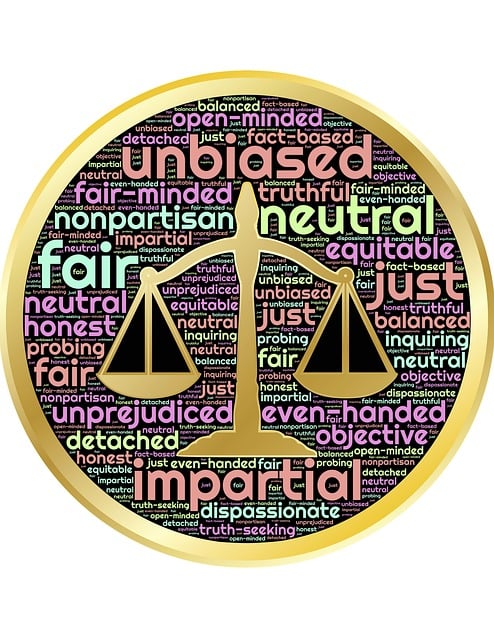Litigation Risk Management leverages plea bargaining as a powerful strategy to streamline legal processes and mitigate risks for clients facing various charges. By negotiating guilty pleas, this approach reduces caseloads, benefits both lawyers and clients through efficient case management, and secures favorable outcomes. In high-volume systems, the effectiveness of plea bargaining in reducing caseloads is crucial, allowing for quicker resolutions and protecting reputations while alleviating financial burdens. Advanced technology boosts these efforts by optimizing investigations, resource allocation, and stakeholder communication, ultimately enhancing the legal system's responsiveness to high-profile risks.
“In today’s legal landscape, efficient case handling is paramount. This article explores crucial aspects of litigation risk management, with a focus on an often-underutilized strategy: plea bargaining. We delve into the effectiveness of this approach in reducing caseloads and its role as a tool for streamlining legal proceedings. From understanding the fundamentals to analyzing impact, we present best practices and future trends, including technology’s influence, offering insights essential for legal professionals aiming to optimize their case management strategies.”
- Understanding Litigation Risk Management: Strategies for Effective Case Handling
- The Role of Plea Bargaining: A Tool for Efficient Legal Proceedings
- Effectiveness Analysis: Plea Bargaining's Impact on Caseload Reduction
- Best Practices for Implementing Plea Bargaining Programs
- Future Trends: Technology and Its Influence on Litigation Risk Management
Understanding Litigation Risk Management: Strategies for Effective Case Handling

Litigation Risk Management involves proactively assessing and mitigating risks associated with legal cases to ensure their effective handling. This includes understanding the potential outcomes, costs, and impacts on both corporate and individual clients facing various charges, from white-collar and economic crimes to other complex matters. A key strategy in managing these risks is the effectiveness of plea bargaining. By negotiating guilty pleas, lawyers can reduce caseloads, allowing for more focused and efficient case management. This approach benefits both legal professionals and their clients by streamlining court processes and potentially reducing penalties.
For his clients facing litigation, a well-planned plea bargain strategy can serve as a powerful tool to navigate complex legal landscapes. It requires a deep understanding of the case, the client’s goals, and the potential consequences. Through skilled negotiations, lawyers can secure favorable outcomes, ensuring their corporate and individual clients receive justice while managing exposure to significant financial and reputational risks.
The Role of Plea Bargaining: A Tool for Efficient Legal Proceedings

Plea bargaining plays a pivotal role in modern legal systems, offering a strategic approach to navigate complex litigation scenarios, especially in the realm of criminal law. This process allows for a mutually beneficial arrangement where defendants agree to plead guilty to a lesser charge or accept a negotiated sentence in exchange for a reduced prosecution case against them. The effectiveness of plea bargaining in reducing caseloads is undeniable. By streamlining legal proceedings and avoiding lengthy trials, it offers a practical solution to manage the backlog of cases, especially in overburdened court systems. This strategy is invaluable in both general criminal defense scenarios and high-stakes cases involving white-collar and economic crimes, where complex defenses can extend litigation for years.
Moreover, plea bargaining serves as a powerful tool for efficient dispute resolution, benefiting both corporate and individual clients. It enables legal professionals to secure favorable outcomes while considering the interests of all parties involved. This method not only expedites the justice process but also fosters a cooperative environment between prosecutors and defendants, ensuring that resources are allocated more effectively. As a result, plea bargaining becomes a critical component in achieving timely resolutions, particularly when managing high-volume cases and maintaining the integrity of the legal system.
Effectiveness Analysis: Plea Bargaining's Impact on Caseload Reduction

The effectiveness of plea bargaining in reducing caseloads is a topic of growing interest in litigation risk management. Plea bargaining allows for the negotiation of charges and sentences, often leading to quicker resolutions than trials. This strategy can significantly reduce judicial backlogs and caseloads, especially in systems facing overwhelming volumes of cases. By offering plea agreements, prosecutors can manage their dockets more efficiently, ensuring that resources are allocated where they are most needed.
In the realm of white-collar defense, plea bargaining has achieved extraordinary results. For instance, a complete dismissal of all charges is possible through plea deals, which can be particularly beneficial for businesses facing civil and criminal allegations. This approach not only lightens the financial burden but also allows companies to preserve their reputation by avoiding prolonged public scrutiny. Effective use of plea bargaining strategies can thus foster a more balanced approach to litigation risk management, focusing on resolutions that serve both individual justice and systemic efficiency.
Best Practices for Implementing Plea Bargaining Programs

Implementing plea bargaining programs is a strategic move for litigation risk management, aiming to streamline court processes and reduce caseloads. This approach has proven effective in many jurisdictions with an unprecedented track record of success. By allowing defendants to negotiate guilty pleas in exchange for reduced charges or sentences, prosecutors can efficiently manage high-stakes cases and avoid indictment. Plea bargaining provides a win-win scenario: it offers defendants the chance to mitigate legal consequences while freeing up judicial resources to handle other matters.
Best practices for these programs focus on transparency, fairness, and consistency. Courts should establish clear guidelines and criteria for plea offers, ensuring defendants understand their options. Regular reviews of the program’s effectiveness are crucial to identify any biases or inequities. Additionally, promoting public awareness about the benefits of plea bargaining can encourage cooperation, reducing the overall workload on legal systems, especially in complex and high-profile cases.
Future Trends: Technology and Its Influence on Litigation Risk Management

The future of litigation risk management is closely intertwined with technological advancements. As legal systems become increasingly digital, technology plays a pivotal role in enhancing the effectiveness of plea bargaining as a strategy to reduce caseloads. The implementation of advanced data analytics and artificial intelligence (AI) can streamline the investigative process, enabling more efficient case assessment and prioritization. This allows legal professionals to focus on complex high-stakes cases that require specialized attention, thereby optimizing resources.
Furthermore, technology facilitates better communication between stakeholders in both the philanthropic and political communities. Digital platforms enhance collaboration, ensuring all stages of the investigative and enforcement process are well-coordinated. This integration of technology not only improves case outcomes but also contributes to a more robust and responsive legal system, particularly in managing high-profile litigation risks.
Litigation Risk Management is a dynamic field, with plea bargaining emerging as a powerful tool for efficient legal processes. As demonstrated by the effectiveness analysis, this strategy significantly contributes to caseload reduction, streamlining court operations. The best practices outlined offer a roadmap for successful implementation, ensuring fairness and justice while managing litigation risks. Furthermore, embracing technology’s role in future trends promises to revolutionize case handling, making the legal system more accessible, transparent, and prompt. By leveraging these strategies, legal professionals can enhance their ability to navigate complex cases and optimize outcomes.






